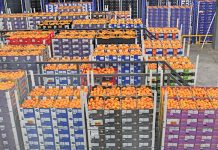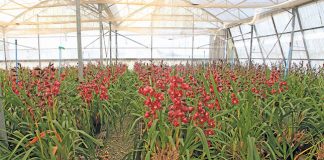
To justify its recommendations, the Framework Convention on Tobacco Control (FCTC) working group report generalises, and accuses tobacco growers of questionable farming practices that must be scrutinised. The report claims that “Tobacco growing entails a number of irreversible costs to farmers, which not only seriously damage their living standards, but also erode their long-term prospects.
“Health risks, working conditions, contractual arrangements, the use of children in tobacco growing, and the environmental practices of tobacco growing have a negative impact on human capital and land, the two crucial assets in rural livelihoods.”
In 1999, Dr David Patched, an agricultural economist at the Commonwealth Secretariat, found tobacco production in Malawi and Zimbabwe to be 6,5 times more profitable than maize, twice as profitable as cotton and 60 times more profitable than sorghum.
In 2007, tobacco in Zambia was 7,5 times more profitable per hectare than maize production and 14 times more profitable than cotton. In Kenya, tobacco generates twice the income that maize does and 7,5 times that of cotton. In South Africa, where tobacco is produced commercially, the turnover on tobacco is 10 times that of maize and 13 times that of cotton.

Francois van der Merwe
Independent review
Because we are concerned that policy decisions are being taken without robust, peer-reviewed evidence, the tobacco industry commissioned Development Delivery International (DDI), an independent international development consultancy dedicated to improving the well-being of resource-poor communities in the developing world, to critically review the evidence base for the FCTC’s claims.
DDI reviewed over 300 published sources on the subject and concluded that the existing research base was both limited and lacked contextual understanding. The second part of the study consisted of an empirical investigation in three tobacco growing countries – Bangladesh, Brazil and Uganda – which looked into whether tobacco cultivation posed a greater hazard to the welfare of poor people compared to the cultivation of other cultivated crops.
The case studies show that claims for a direct causal link between tobacco cultivation and poverty do not hold true as a generalisation. Tobacco is grown as part of a cropping system and contributes to a diverse income portfolio; it is an important and reliable income source that enhances food security, rather than reducing it and improves the welfare of farmers. Although the case studies in the DDI study look at only three countries, they can be used to challenge generalisations and help improve the quality of discussion around this important topic. The study concluded:
- Tobacco was not the only source of income for the farmers, nor the only crop grown.
- Income from tobacco farming is mostly seen to increase, rather than threaten or reduce, food security.
- There is movement in and out of cultivation of tobacco, suggesting a degree of choice whether or not to grow tobacco. This movement does not support a picture of entrapment in tobacco cultivation through debt.
- There is no evidence of tobacco cultivation leading to adverse labour or employment outcomes.
- Market support for tobacco cultivation is comparable to, or better than, that available for other cash crops.

Flue-cured tobacco is heat cured without being exposed to smoke. Flue curing produces tobacco that is high in sugar with medium to high levels of nicotine.
Tobacco farming under fire
Tobacco cultivation takes up 0,3% of the world’s arable land. That’s less than half the land given over to coffee, and tobacco is only grown for part of the year. Global cultivation of tobacco has decreased from 4,6 million hectares in 1990 to 3,9 million hectares in 2010. To give a sense of proportion to the issue, this is an area smaller than Switzerland or just twice the size of the Kruger National Park at 2 million hectares.
The accusation is made that “tobacco growing ruins the soil, leaving land useless for other food crops; uses high quantities of pesticides and large amounts of water; and results in deforestation due to land clearance”.
Deforestation
Tobacco growing is often portrayed as one of the major causes, if not the major cause, of deforestation in the world, especially due to deforestation for expansion and for the use of wood to cure tobacco. However, more than half the tobacco grown worldwide does not make use of wood for curing, and in cases where it does, there is evidence of woodlot planting and responsible behaviour from both the growers and the tobacco industry.
Deforestation impacts are site-specific, but can be mitigated. In Zimbabwe, for instance, a tobacco sector forestry department has been created with the objective of effectively establishing and managing tobacco energy woodlots. The tree planting projects will facilitate the establishment and management of almost 5 000 woodlots in the next seven years, approaching sufficiency for tobacco crop volumes.
Child labour
There is evidence of widespread use of child labour in agriculture throughout the world. But there is little evidence that supports tobacco cultivation being a causative factor. Child labour is no more prevalent in tobacco cultivation than in the cultivation of other crops. A major review of child labour in tobacco production in Africa concluded that there was no evidence to indicate that child labour was any higher, or lower, than the use of child labour in other sectors.

Workers pruning tobacco seedlings. Pruning helps root development and encourages uniform stalks.
Children work in tobacco growing since this is a labour-intensive agricultural activity taking place mainly in developing countries. This fact cannot be denied. At the same time it cannot be denied that the tobacco sector is well aware of this problem and is actively working to solve it.
In 2001, the tobacco sector helped to establish the Eliminating Child Labour in Tobacco Growing Foundation (ECLTGF). The ECLTGF’s mission is, “To contribute to the elimination of the use of child labour in the tobacco growing sector so that children are provided with an upbringing that gives them the best chance in all aspects of life.”
Already, other agricultural sectors have benefited from our research and experience. The ECLTGF has served as a model in the creation of a similar initiative in the cocoa growing sector.
Soil degradation
The deterioration of soil through cultivation is a generic issue that affects the agricultural sector generally. It is managed by following an appropriate crop rotation policy. Farmers are almost always well aware of this and specifically include leguminous crops as part of their rotational crop mix to restore soil fertility.
Pesticide use
There are not many official comparative studies reporting the amount of plant protection products used on different crops to enable a definitive understanding of whether tobacco uses more agri-chemicals than other crops. However, information taken from the database of the US Department of Agriculture, which conducted a survey on the use of plant protection products in 1992, 1997 and 2002, indicate that tobacco uses less agri-chemicals than other major crops, such as strawberries, citrus, apples, potatoes or carrots.
A similar comparison was carried out in 2007 by the Brazilian Sugarcane Industry Association, which described the amount of pesticides used in terms of active substance per hectare on tobacco as one of the lowest among major crops and certainly much lower than the quantities used on apples, tomatoes, potatoes, oranges, cotton, grapes, garlic, onions, bananas, soya beans, peanuts, coffee, sugar cane, wheat, millet or rice.
While it is recognised that the regulation of pesticide use in middle- and low-income countries can be poor, no comprehensive evidence has been found to indicate that the use of pesticides on tobacco is greater, more toxic or persistent than in other comparable agricultural commodities, such as cotton or vegetables, particularly brassicas, cauliflower, cabbage, cress and broccoli. Safe handling of agri-chemicals is important, but the arguments against tobacco need to be seen in context, as most alternative crops face very similar challenges.
Green tobacco sickness
There are reports that green tobacco sickness (GTS) has been experienced by some tobacco workers. GTS occasionally affects those who have direct skin contact with wet tobacco plants. GTS is caused by nicotine poisoning resulting from dermal absorption of dissolved nicotine from the surface of the wet tobacco. However, there is no credible evidence to indicate that GTS can have long-term effects and appropriate farming practices, including the use of protective clothing and contact avoidance with wet plants, can effectively manage the risk.
Skin risks
Most risks relate to handling dry tobacco products, especially in cigar manufacture, which could probably be easily avoided
by using gloves and protective clothing. Dermatological risks associated with the handling of tobacco are infrequent and not widely reported, or significant in their effects. Cases associated with growing the crop are particularly rare and at least some of these relate to pesticide use.
The DDI’s study concludes that there is probably not a significant dermatological concern when growing tobacco, especially when compared to other crops more frequently implicated as the causes of phytodermatitis such as hot peppers, citrus and cashew. The reality is that many of the social, environmental and economic challenges given as a reason to move farmers out of growing tobacco are common to all types of agricultural crops and are certainly not unique to tobacco growing.
The WHO FCTC’s proposals can be read at www.who.int/fctc/en/
The DDI’s full report can be read at http://ddinternational.org.uk/viewProject.php?project=21
The views above were expressed in TISA’s New Leaf (Second Quarter 2012 edition)













